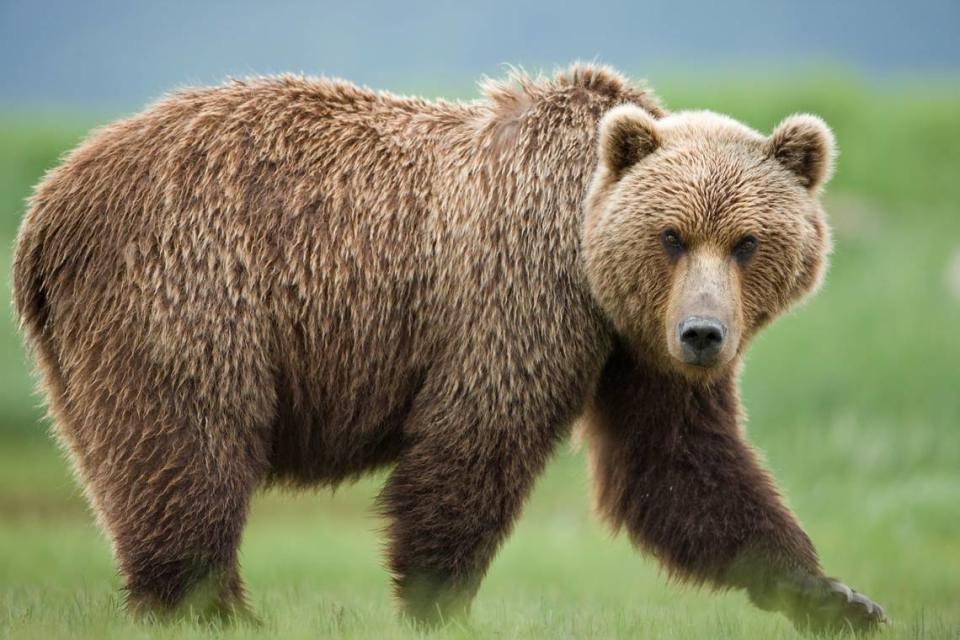A mysterious grizzly carcass was found on Whatcom beach. Here’s what to do if you see a bear
A mysterious grizzly bear carcass was found on a Whatcom County beach last week, shocking professionals who still aren’t sure how it ended up there.
Having a grizzly bear in Whatcom was something Dave Jones, Washington State Department of Fish and Wildlife Game Warden, had never seen before or even heard of happening before, according to earlier reporting from The Bellingham Herald.
The rare sighting is raising many questions of what happened to the bear, how it was injured and how it ended up on the shore of a beach north of the Cherry Point refinery.
The Herald has done some research for you about just how rare this sighting is, if grizzly bears may become more prominent in our county and what you need to know:
Are grizzly bears common in Whatcom County?
Grizzly bears used to be more present in the Cascade Mountain range and eastern Washington, but through years of habitat degradation, loss of habitats and killings, grizzly bears have been listed as a threatened and endangered species, according to the Washington Department of Fish and Wildlife.
Grizzly bears are known to occupy the Selkirk Mountain Range in the northeast corner of Washington, about 300 miles from Bellingham, and are not currently known to live in the North Cascade region, or anywhere close to Whatcom County.
Grizzly bears used to have a population of 100,000 across Alaska to Mexico, but have now declined by about 99%, leaving an approximate 1,600 bears outside of Alaska, according to the Washington State University Bear Center.
Black bears are more common across Washington state in forested areas.
How do you tell the difference between a black bear and a grizzly bear?
There are a few ways to tell the difference between a black bear and a grizzly bear, according to the National Park Service:
▪ Grizzly bears usually have a hump on their back, as black bears have a level back.
▪ Grizzly bears have long claws as black bears have short, curved claws.
▪ Grizzly bears are larger than black bears.
Black bears can sometimes be difficult to classify, as their fur can range in color from black, brown, gray or even white in some areas.


Are grizzly bears dangerous?
Both grizzly bears and black bears can be dangerous. Bears’ behavior can be unpredictable, so it is best to stay calm and keep your distance, according to the National Park Service.
What do you do if you see a grizzly bear?
To avoid coming in contact with a bear, never feed bears and manage your garbage to make it less appealing for bears, according to the Washington Department of Fish and Wildlife.
If you do come into contact with a grizzly bear, follow these guidelines:
▪ Stay calm and speak normally so the bear can identify you as a human, not an animal.
▪ Move slowly away from the bear, do not run or climb a tree.
▪ Pick up small children immediately.
▪ Make yourself look at large as possible.
▪ Do not drop your pack or allow the bear to access any food.
What if a grizzly bear attacks?
▪ Play dead. Lay flat on your stomach and cover the back of your neck with your hands. Spread your legs, making it harder for the bear to turn you over and remain still.
▪ Do not fight back unless the attack persists, then fight back vigorously and try to hit the bear in its face.
If you are worried about bear attacks, travel with bear pepper spray.
Guidelines for coming in contact with a black bear are different than if you come into contact with a black bear, according to the National Park Service.
If you are attacked by a black bear, do not play dead. Try to escape or if you cannot get away, fight back by hitting the bear’s face and muzzle.

